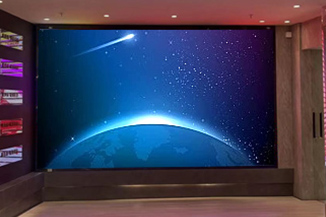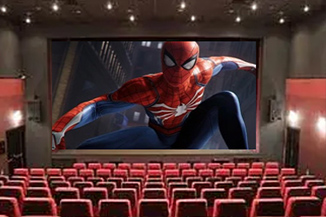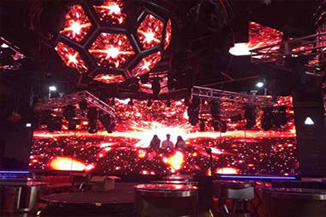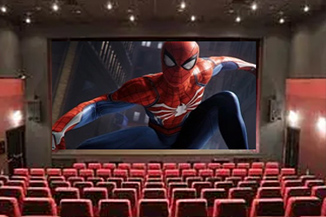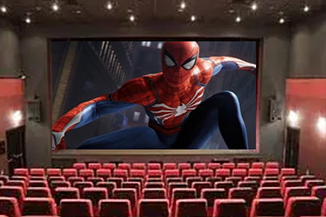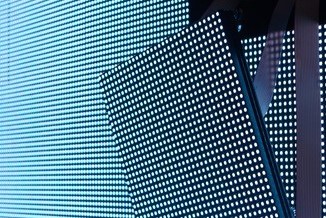Publisher: Supplier of LED Display Time: 2022-09-21 17:17 Views: 1358
Whether before leaving the factory or after using for a period of time, the point-by-point correction technology allows users to greatly improve the uniformity of the display in a very short time and at a very low cost, and significantly improve the image quality. Before being applied to the factory, point-by-point correction is a means of quality improvement, which means the improvement of competitiveness and the expansion of profit margins; after being used for a period of time, point-by-point correction can prolong the display effect of the full-color LED display, which is beneficial for users. Create more business value and reduce waste of resources.
There are two main types of mainstream point-by-point correction techniques:
1. On-site point-by-point correction
It is to operate the entire large screen that should be installed. Due to the influence of the environment, weather and technical compatibility problems in different places, the correction cost is high, especially the maintenance of some foreign orders.
2. LED cabinet calibration point by point
It can greatly improve the consistency of the display screen, and it is uniformly calibrated in the production workshop, so the cost is relatively low, and the calibration effect is relatively good.
At present, LED display manufacturers use box-by-point calibration, which is a test procedure that must be passed before the LED transparent screen leaves the factory. Wittum's cabinet calibration technology is at the forefront of the industry, and the transparent screen has strong adaptability to various environments. The display effect is consistent.
The following focuses on the point-by-point calibration of the cabinet:
Cabinet calibration is the last link before leaving the factory. It is mainly used to eliminate the brightness and chromaticity differences between the cabinet and the cabinet, and improve the uniformity of the LED display after splicing. In addition to adding calibration links in the production process, manufacturers generally need to follow up on the calibration effect of the screen body when it leaves the factory. There are three commonly used methods: one is to splicing all the cabinets together to observe the display effect, but the workload of splicing is relatively large, which is inconvenient to realize; the second is to randomly select some cabinets for splicing and observe the correction effect; three It is to use the measurement data recorded by the calibration system to simulate and evaluate the calibration effect of all cabinets. Added LED production lines for box calibration and simulation evaluation/sampling inspection.
Similar to on-site calibration, for each cabinet, the process of cabinet calibration includes data acquisition, data analysis, target value setting, calibration coefficient calculation and coefficient upload, and also requires the cooperation of the control system.
Key technologies and difficulties:
Cabinet calibration is an effective way to improve the image quality of LED transparent screen, and its key technical aspects are mainly reflected in the following two aspects:
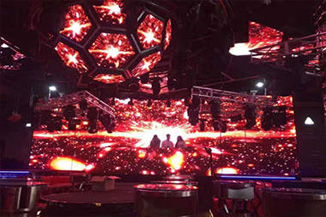
1. Inter-pixel uniformity inside the box
(1) Including light and chromaticity uniformity correction and light and dark line correction:
Brightness and chromaticity uniformity correction:
The brightness and chromaticity information of each LED lamp in the LED box is measured by measuring equipment. The measurement method involves the knowledge of photometry, chromaticity and digital image processing; after obtaining the chromaticity information of each light, the corresponding calibration standard , calculate the corresponding correction coefficient and send it to the receiving card of the corresponding box; after the box is lit, the display control system will adjust the LED current according to the correction coefficient, so that the brightness and chromaticity of all LEDs in the box are consistent.
Bright and dark line correction:
It is to adjust the fluctuating LED brightness to a consistent level. In the process of adjusting the brightness, it is necessary to appropriately reduce the maximum brightness value of most LEDs. Chromaticity correction is based on the principle of RGB color matching, and solves the problem of chromaticity deviation by changing the color coordinates of RGB three colors. For the color gamut comparison diagram before and after correction, the large triangle is the color gamut of the display screen before correction, and RGB three colors The color coordinates are discretely distributed; the small triangle is the corrected color gamut of the display screen, and the RGB three-color color coordinates are consistent.
(2) Due to the limitations of machining accuracy, assembly accuracy and other technological reasons, there is a slight inconsistency in the spacing of the spliced light panels, and bright lines or dark lines will appear during display.
2. Brightness and chromaticity consistency between cabinets
The human eye can only distinguish the brightness difference of more than 4-5% between LED pixels, but can easily identify the brightness and chromaticity difference of 1% of the cabinet. That is to say, the human eye has lower requirements on the consistency of the pixels inside the box, but higher requirements on the consistency between the boxes. Therefore, the consistency of brightness and chromaticity between cabinets is a key technology unique to cabinet calibration.
The inconsistency of brightness and chromaticity between cabinets is mainly reflected in two aspects:
(1) There is a difference in the average brightness and chromaticity between the cabinets. When the cabinets are spliced, a clear boundary line will appear, which can be achieved by adjusting the color gamut and setting the appropriate target value; if necessary, it is necessary to equip the precision A higher colorimeter for auxiliary measurements.
(2) The brightness and chromaticity distribution of the cabinet presents a gradient distribution, which is caused by the gradient distribution phenomenon in the measurement data of the cabinet. When the cabinets are spliced together, the brightness of the splicing place will undergo a large jump, forming an obvious splicing line. This requires the correction system to be able to detect and resolve the gradient distribution of the measurement data.
The article is excerpted from the Internet. If there is any infringement, please contact us to delete it in time. Thank you.
